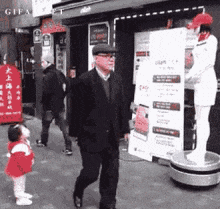Interactivity, as I came to understand the term so far in the course, is a process by which a prompt from one singular entity invites one or multiple separate actors to alter their behavior in some way, after which an ensuing reaction from the initial “prompter” generates another response, beginning a self-sustained series of actions and reactions. For an interaction to occur, all parties involved must be aware of/alert to their respective counterparts’ behavior (or lack thereof) to determine whether to engage in some behavioral adjustment.
I arrived at this definition primarily from a combination of The Art of Interactive Design by Chris Crawford, as well as my own observations and line of reasoning from class discussions. I think Crawford’s mention of thinking, listening, and speaking in discussing interactivity influenced the main body of my definition. I also the need to add the condition of there being some prompt in my own definition of interactivity. An interaction can not occur without an initial catalyst that works to establish communication. For example, if the remote used to operate a toy car worked, but didn’t have clearly marked buttons or appear to be associated with the car in any way, then I would hesitate to call it interactive. In this case, someone (ie. an external actor) would have to approach you to tell you how the remote works before you could use it, changing the nature of the interaction to be non self-contained; the remote control car is in itself not interactive.

In one of the slides from our first class meeting, a definition of interaction appears next to a .gif of a child bowing back to a bowing robot. The bowing robot might meet my conditions for interactivity depending on its specific qualities, specifically whether it is responding directly to the little girl’s actions. The robot prompts the girl to approach it by exhibiting recognizably human traits. My definition of interaction, however, presupposes a degree of reciprocity from both actors, which means the robot must have been able to identify the girl as having approached it, and respond as a result.
The second possible examples of interactivity I looked at were various art installations that involved moving or changing components that responded to the viewer’s motions. The installation below fits my first criteria in that by being framed against a wall facing open space, the piece prompts the viewer to approach it. The piece then responds to the people’s behavior (in this case their movements), and adjusts accordingly. This installation meets all my subsequent conditions for interactivity in that each movement by the viewer produces a reaction, and achieves an ongoing exchange between the different actors.

Our project, “The Heal-O-Matic 5000” was predicated on the idea that by 2119, technology will have progressed to the point were people will be able to obtain an accurate diagnosis of any ailments quickly and on the spot from a machine. The title and accompanying graphics on the front of the machine prompt the user to place their hand on its surface where the outline of the hand is shown. The machine would then respond to the action by the user by identifying the persons problem and dispense the appropriate prescription.